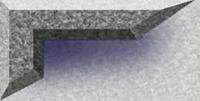During the 2nd Seminole War, the US troops were trained and acted in combat as "light infantry"
in contrast to maneuvering in close order, shoulder to shoulder. The lone exceptions were at the Battle of Withlacoochee
(Dec. 31, 1835) and the 6th US Infantry at the Battle of Okeechobee (Dec. 25, 1837). In both of these occasions the regulars
involved were slaughtered. Consequently, the troops fought the Seminoles in "skirmish" or "extended" order, with several paces
between the file partners.
In 1835 General Winfield Scott's "Infantry Tactics; In Three Volumes" was adopted by the government
for the US Army. This is the system generally employed by United States forces in the Florida War. A notable exception was
the 4th US Infantry among the regulars, whose Lt. Col. Foster continued to employ the light infantry drill of the 1825-1835
tactics through 1838. It is this manual too which was provided to the first state volunteer units to serve in Florida in 1836,
and thereafter. In 1836 an abridged version of this system (compiled by Samuel Cooper, and called "Cooper's tactics") was
produced for use by state militias.
Below is an edited transcription of this important drill. It pre-supposes that a company or battalion
is formed in line of battle before deploying into skirmish, or "light infantry," order. This version has been edited, with
some portions regarding a line in three ranks deleted. The commands are all italicized, and a few important paragraphs highlighted
for emphasis.
The Militia of the United States generally employed the same tactics as in use by the United States Army in a given
period. The principal tactical manuals of the 2nd Seminole War period (1835-1842) are General Scott's "Infantry Tactics; in
three volumes (1835); and Cooper's Tactics (1836) published for the use of the militia of the states, which is a synopsis
of Scott's work.

